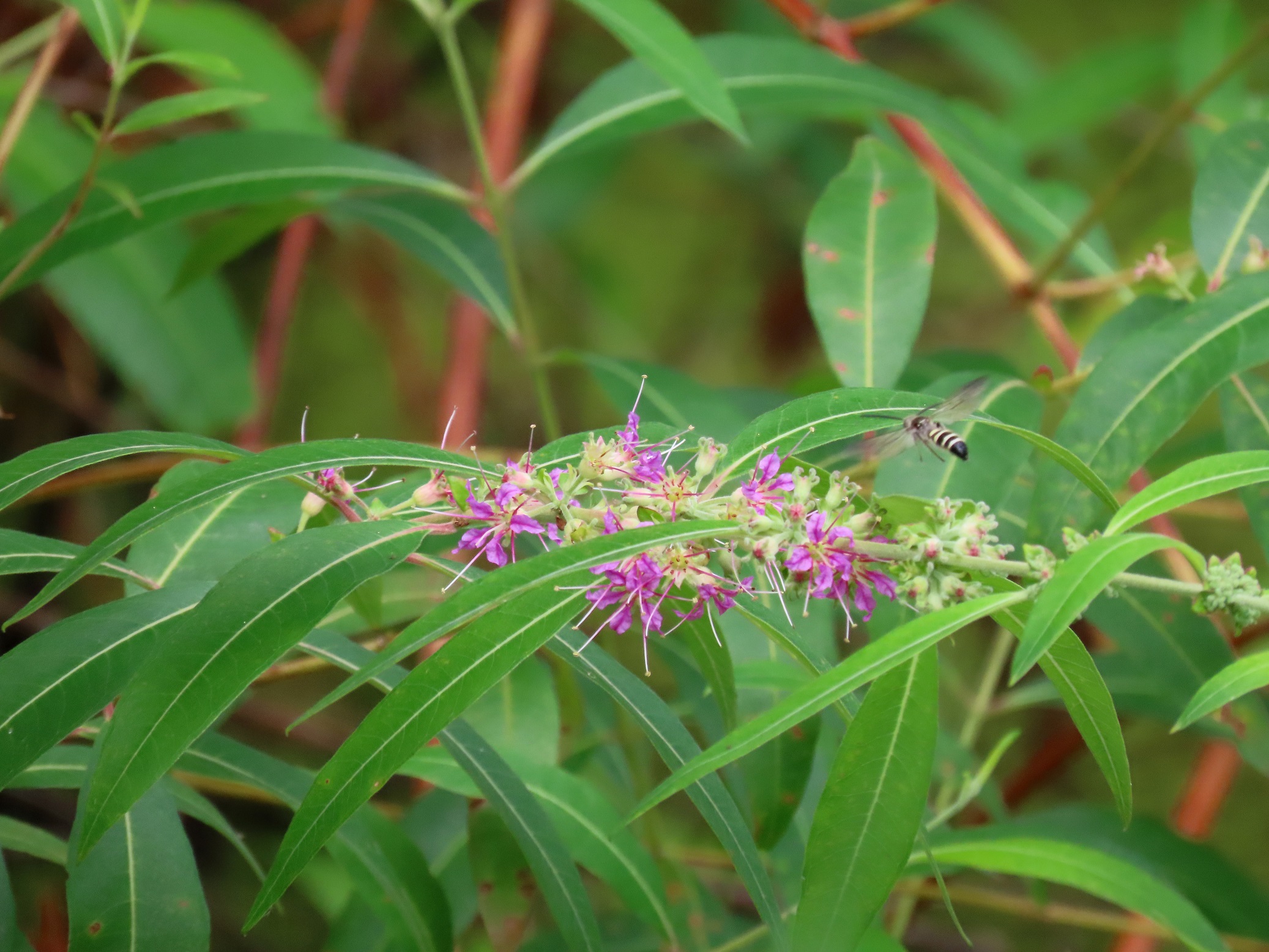
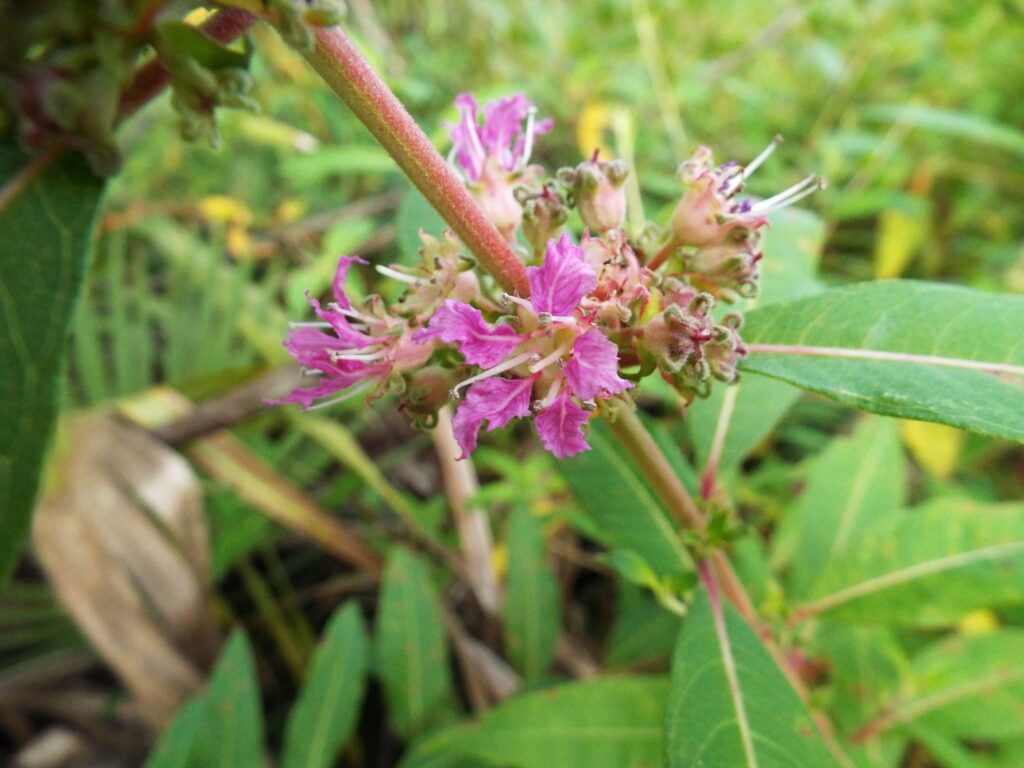
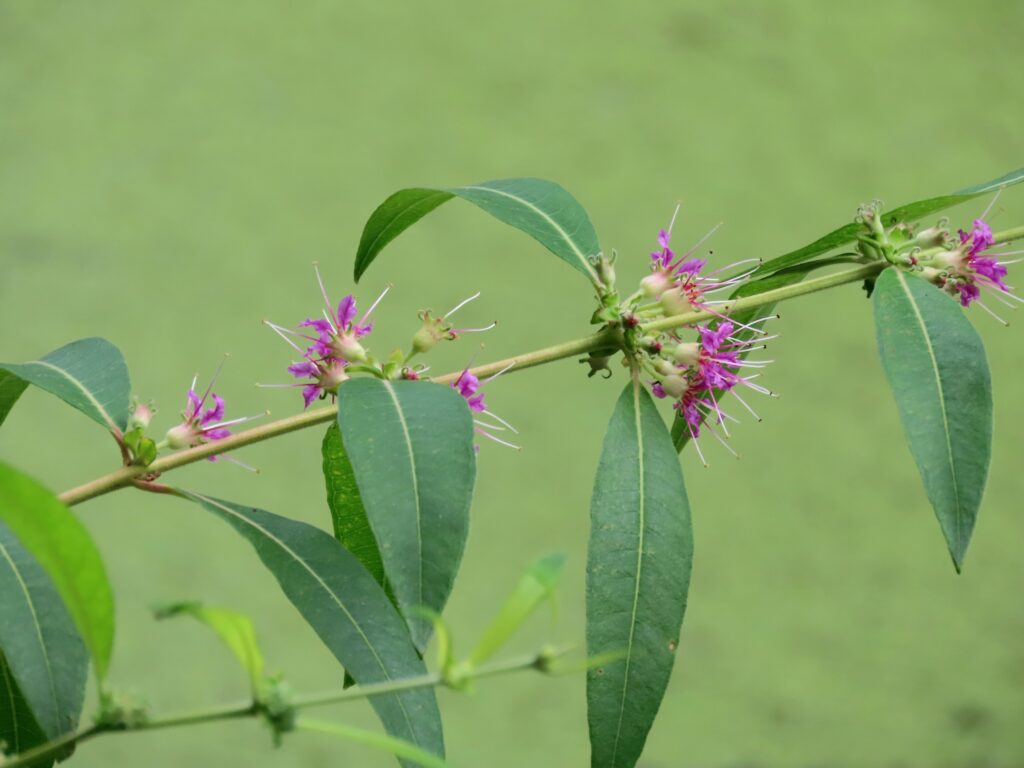
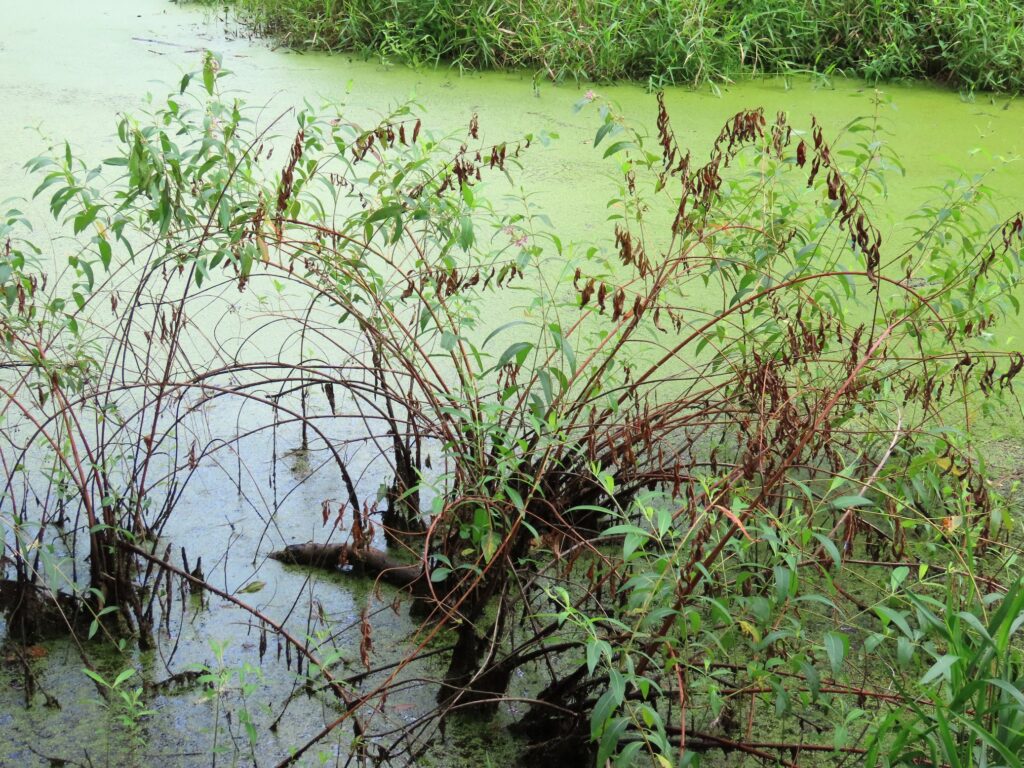
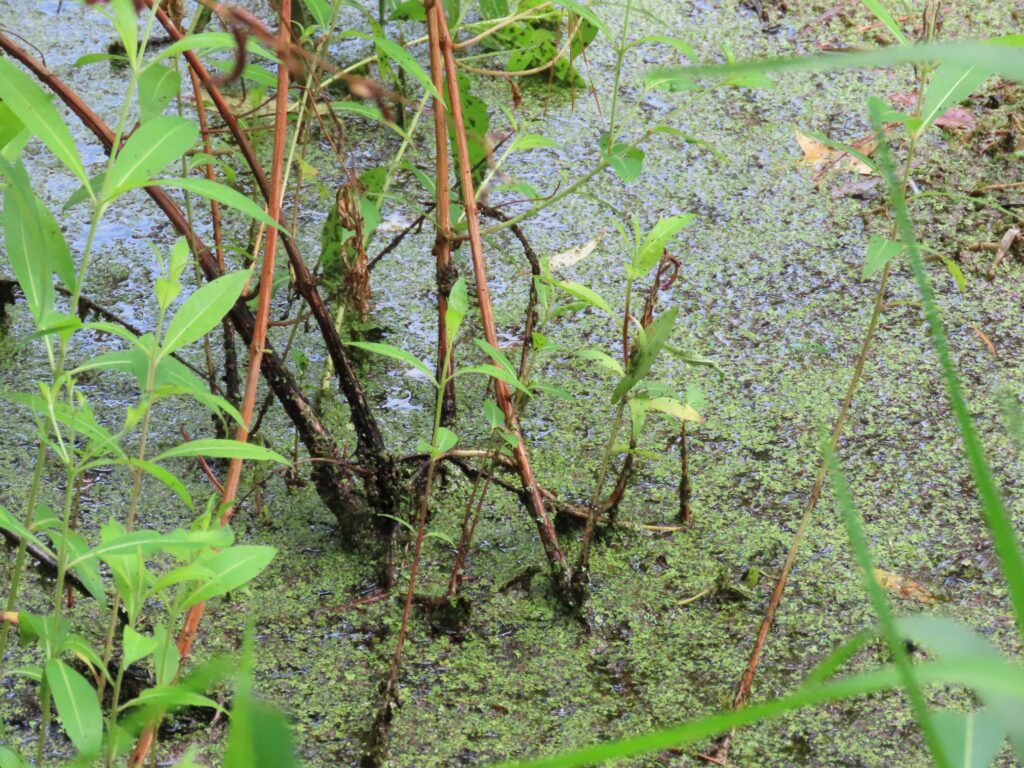
This week for Flora and Fauna Friday we have a purple plant of our marshy thickets, Swamp Loosestrife (Decodon verticillatus).
Swamp loosestrife is an herbaceous wetland shrub found throughout slow-moving freshwater marshes. This shrub can grow eight feet high in the saturated soils of our marshes. Simple, narrow leaves ladder opposite along the stem up from the muck before slipping back down. It’s slender arching branches tip-toe their way over the surface of the water, dangling down into the mud where they take root. This is an example of a plant that can spread by layering. Although Swamp Loosestrife typically dies back in winter before it can layer, it will do so if the conditions are right. Layering is the process by which a plant’s stem will produce roots when in contact with the soil. This process is quite common in vines and creeping plants but is not so often observed in trees or shrubs. Our loosestrife is an exception.
In late summer, Swamp Loosestrife puts on its grand display. Wrinkled magenta blossoms push their way through the nodes of the plant creating a network of floral chains as if a purple cast-net was thrown over the marsh. Yet, these petals are just the stage for the show. Swamp Loosestrife is an excellent nectar plant and with its blooms it brings forth butterflies. Palamedes Swallowtails, Long-tailed Skippers, Eastern Tiger Swallowtails, Silver-spotted Skippers, Cloudless Sulphurs, Clouded Skippers, Common Buckeyes, early Ocola Skippers, and a myriad more blanket the thicket, ensnared by the web of nectar. The fog of butterflies our loosestrife ushers in can be suffocating when the environmental conditions are right. The blooms attract not just butterflies but droves of bees, wasps, flies, and moths to boot. The flowers funnel in thousands of nearby pollinators per acre for this annual festival and toast to the muck of the marsh.